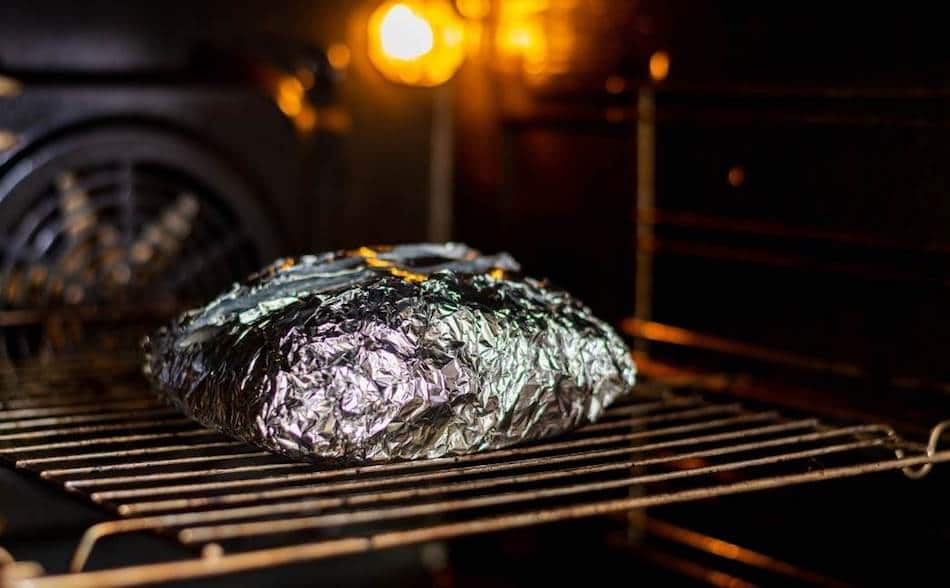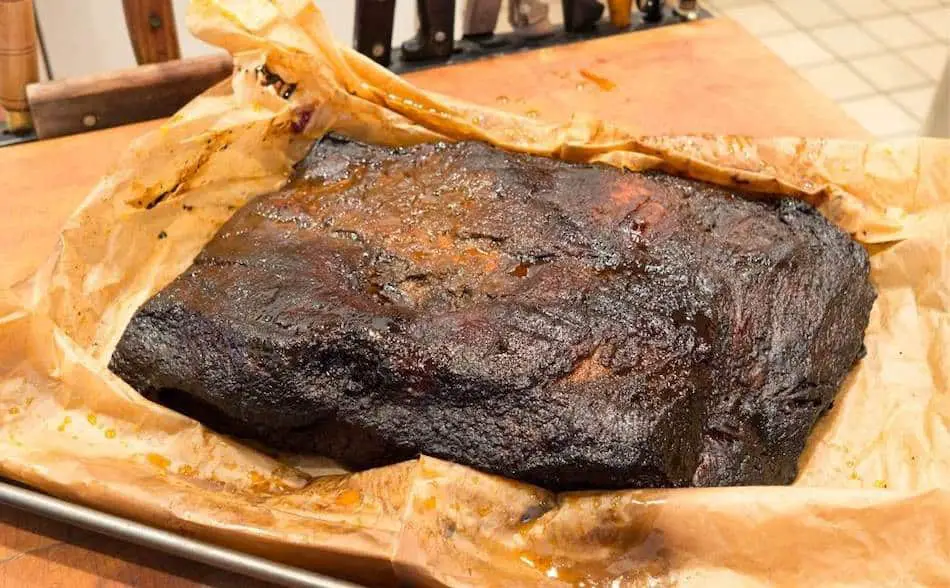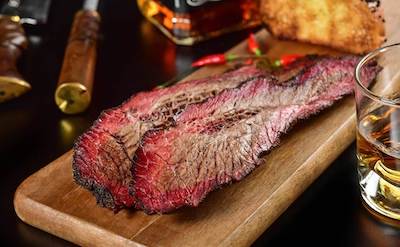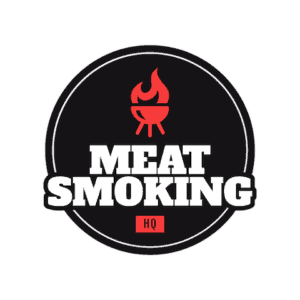
Cooking a brisket to perfection can be a challenging task, but by smoking it to the wrapping stage and then finishing it in the oven, you can achieve a delicious, tender, and juicy result. This method also has the added benefit of allowing you to shut down your smoker and move the meat indoors, saving fuel and reducing your expenses. I wanted to find out if finishing brisket in the oven made any difference to the taste and quality of the meat, so I did some research, then tried it myself.
Once your brisket has reached the wrapping stage, it should have developed a bark and have reached an internal meat temperature of around 150°F. At this stage of the cook, you can remove the brisket from the smoker or grill and finish it in a conventional oven. Finishing brisket in the oven will have no impact on the flavor or quality of the meat if you keep the temperature in the 220°F range. The last step of the brisket cook is simply getting the roast to a 203°F internal meat temperature without drying it out. However, there’s a few things you need to keep in mind.
Smoking brisket is a marathon effort that will take a huge chunk of your day and burn through an enormous amount of fuel. Depending on the size of the brisket, it can take anywhere from 12 to 24 hours to smoke, which means you will burn through a lot of charcoal, gas or wood pellets.
With such a long cook, you can expect to be constantly outside for most of the day and evening. It is for this reason, some people like to finish their briskets in the oven. Bringing your brisket inside for the last stage of the cook will not only save you money on fuel, it will also make time management easier.
Why Finish Brisket In The Oven?
- Smoking brisket is a long process that can take 12-24 hours and burn through a lot of fuel
- Finishing the brisket in the oven can save money on fuel and make time management easier
- Finishing the brisket in the oven will not impact the taste or quality of the meat if the oven temperature is kept at 220°F
- Research and personal experimentation can help determine the best method for smoking and finishing a brisket
| Benefits of finishing brisket in the oven | Considerations when finishing brisket in the oven |
|---|---|
| Saves money on fuel | Make sure to set the oven temperature to around 220°F |
| Easier time management | Use a remote meat thermometer to monitor the internal temperature of the brisket |
| Safer than a smoker | Make sure to have necessary safety measures in place such as fire alarms, timers, and meat thermometers |
| Brisket should be wrapped in foil before finishing in the oven | |
| The goal is to reach an internal temperature of 203°F without drying out the meat |
How to Finish a Brisket in the Oven: Step-by-Step
To start, preheat your oven to 250 degrees Fahrenheit. While the oven is heating up, remove your brisket from the smoker and tightly wrap it in a double layer of foil. Make sure to seal the edges of the foil well, as this will trap in the natural juices and help to keep the meat moist while it finishes cooking.
Once the oven has reached the desired temperature, place the wrapped brisket in the oven and let it cook for about 3 hours. After this time, you can check the internal temperature of the meat with a meat thermometer. The ideal temperature for a fully-cooked brisket is around 200-205 degrees Fahrenheit.
When the meat has reached the desired temperature, remove it from the oven and let it rest for at least 30 minutes before unwrapping it. This will allow the meat to reabsorb the juices and further tenderize, making it even more delicious.
When you’re ready to serve, unwrap the brisket and slice it against the grain for maximum tenderness. The resulting brisket should be a beautiful dark brown color, with a rich smoke ring and a juicy, flavorful interior.
This technique is great way to get the best of both worlds by using the low and slow smoking method to impart a delicious smoky flavor and the oven to finish cooking it to perfection, while saving on fuel costs. It is also more flexible as you can control the temperature more easily in an oven which can be useful if you are in a rush to finish the brisket, or you want to be sure it is finished cooking by a certain time.
As with all barbecue, the most important thing is to cook it low and slow, and be patient, with a good brisket you can’t rush it.
Can You Smoke Brisket Overnight In The Oven?
If your brisket has been in the smoker most of the day, it can be wrapped in foil and finished in the oven overnight. However, make sure the oven temperature is set to around 220°F and use a remote meat thermometer to alert you once the brisket reaches the target internal temperature of 203°F. Shutting off your smoker and bringing your brisket inside can also make the planning and time management easier. A conventional oven is safer than most smokers, as long as you have fire alarms, timers, meat thermometers, etc.
Can You Sleep While Your Brisket is Smoking?
Once your smoker has been shut down and the brisket has been wrapped and placed in the oven, it’s safe to go to sleep as long as you have a remote thermometer that will alert you when the meat reaches the done temperature. It’s one thing to leave a brisket in the oven, but leaving a brisket outside in a charcoal , gas or pellet smoker is risky. The wind can cause the temperature of your smoker to fluctuate and ruin your brisket.
Finishing Brisket in the Oven Saves Fuel
A brisket will take anywhere from 12 to 24 hours to smoke, which is a lot of charcoal, wood pellets or logs depending on your fuel source. You will use half the amount of fuel by finishing the brisket in the oven, which will add up to a lot of money if you smoke a lot of meat. Wood pellets, charcoal and propane can be expensive, so halving the cost makes sense.
Does Finishing in the Oven Change the Flavor?
Once the brisket reaches the wrapping stage, the flavor has already been developed, so finishing in the oven will make no difference to the taste. We cook brisket in two stages; wrapped and unwrapped. The first stage is the most important stage for flavor development, but the second stage is more about getting the brisket to an internal temperature of 203°F.
Have you tried smoking a Wagyu brisket yet? You can get one delivered to your door from Snake River Farms.
Brisket Smoking Plans- Time Management
Brisket can be a time management nightmare, especially if you are hoping to have it done for a lunch or dinner. It can take anywhere from 12 to 20 hours or more to smoke a big packer brisket, plus another few hours to rest. You can aim to have the brisket done between 1-4 hours before you need to slice and serve.
12-18 Hour Brisket Planner – Finished in the Oven
| Brisket Total Cook Time | Start Time | Begin Spritzing | Wrap Brisket | Finish in Oven | Done Time (203°F) | Holding Time In Dry Cooler (1-4 hours) |
| 12 hours | 6pm | 9pm | 12am | 12am | 6am | Between 7am – 10am |
| 15 hours | 5pm | 8pm | 11pm | 11pm | 8am | Between 9am – 12pm |
| 18 hours | 2pm | 5pm | 8pm | 8pm | 8am | Between 9am- 12pm |
Have you seen the most advanced thermometer on the market? FireBoard can be controlled via your phone, holds meat 6 probes, and records your cook data on a cloud.
Is It Safe To Smoke A Brisket Overnight?
Nearly all smokers have the potential to start a fire, therefore need monitoring. The ‘safest’ smokers would probably be electric smokers because they are basically an outdoor electric oven. Pellet smokers are relatively safe to leave unattended, although I’ve had some issues with the hopper getting blocked and causing a lot of smoke to gush out the back. Pellet smokers can explode if the gases can’t escape, so make sure the chimneys are opened all the way. Charcoal smokers can be unpredictable, but if you have a good understanding of your smoker, they can be left unattended. However, I would highly recommend using a decent remote wireless thermometer to keep by your bedside to alert you of any temperature fluctuations. Grease fires are the biggest concern with most smokers, so make sure you give them a good clean out before you attempt an overnight cook. If grease builds up at the bottom of your smoker, a grease fore could start, which is a hazard, but will also ruin your meat with bad smoke. Before you even think about leaving your pit unattended, make sure you know your smoker well. Once you have a good understanding of your smoker, you will be more comfortable stepping away for a short time.
The Unwrapped ‘Naked’ Brisket
In the unwrapped stage, the naked brisket sits on the grill, absorbing smoke. It is in this stage of the cook where the flavor profile is created. Smoke likes cold surfaces, so the meat will attract a lot of smoke in the first few hours. The first half of the cook is also about building a nice crust on the outer layer of the meat. The rub and fat on the surface of the meat blend and form a hard outer layer we call the bark. Adding liquid through mopping/spritzing is an important part of the first stage of the cook. The added moisture helps form the bark and cools the meat. The cooling of the meat slows down the cooking, which buys more time to allow the meat to slowly cook and break down all the fat and connective tissue in the brisket.
World Brisket Champion Harry Soo is now sharing his secrets with his Competition Meat Rubs.
The Wrapped Brisket
Once the brisket reaches an internal temperature of around 150°F, it is a common practice to wrap the brisket in foil. Wrapping the brisket will create steam and help the meat stay moist, and it will help push the brisket through the stall. Brisket is a tough cut of meat and needs to be cooked low-and-slow for as long as possible to allow the fat and connective tissue to break down. Once the connective tissue and fat melt, it forms a gelatin-like texture to the meat, which makes it taste wonderful. Check out my Brisket Wrapping Guide.

Using The Oven To Push The Brisket Through The Stall
The oven will also help the brisket push through the stall. Once the unwrapped brisket reaches an internal temperature of about 150°F, the meat sweats. The sweat cools the outer layer of the meat and slows down the cooking process and hits what we know as the stall. A brisket can sit in the stall for hours, which is extremely frustrating if you plan on having your brisket ready for dinner. Wrapping in foil will help push the meat through the stall much faster by trapping heat and creating steam, and the meat will sit in the parcel and braise.
Holding Your Brisket – Resting
A brisket will stay hot for up to 4-hours if you wrap it in a towel and store it in a dry cooler. It’s difficult to plan a brisket cook because we work to temperature and not time. We also have to allow time for the stall which can last for hours. For more information of resting and holding brisket, check out this article.
In Summary
- Set the oven temperature to around 220°F and use a remote meat thermometer to monitor the internal temperature of the brisket
- Brisket that has been smoking most of the day can be wrapped in foil and finished in the oven overnight
- The goal is to reach an internal temperature of 203°F without drying out the meat
- Shutting off the smoker and bringing the brisket inside can make planning and time management easier
- A conventional oven is generally safer than a smoker, as long as you have the necessary safety measures in place such as fire alarms, timers, and meat thermometers.
Smoked Brisket Finished In The Oven

Ingredients
- Rub recipe :
- Paprika – ½ Cup
- Salt – ½ Cup
- Brown Sugar – ½ Cup
- Garlic Powder – ½ Cup
- Onion Powder – ¼ Cup
- Chilli Powder – ¼ Cup
- Cumin – ¼ Cup
- Black Pepper – 2 Tablespoons
Instructions
1. Trim brisket, leaving 1/4 inch of fat.
2. Apply barbecue rub to the brisket, covering both sides. To make the rub stick, apply a binder of either olive oil or yellow mustard.
3. Fire up your smoker, setting the temperature to 225°F.
4. Use hickory, pecan or oak wood. Mix in some apple or cherry wood to soften the flavor.
5. Place the brisket in the smoker fat side facing the heat source.
6. Close the lid and leave the meat to smoke for the first 3 to 4 hours.
7. After 4 hours, begin spritzing the brisket every 30 minutes until the internal meat temperature reaches 160°F.
8. Once the bark has hardened and the rub doesn’t stick to your finger when you touch the brisket, then it’s time to wrap.
9. Remove the brisket and wrap In foil or butcher paper.
10. Close down your smoker and pre heat the oven to 250°F.
11. Insert a thermometer probe into the brisket and cook until the meat reaches 203°F, or is probe tender. The perfectly cooked brisket should feel like butter when poked by a probe.
12. Remove the brisket and rest for 30 minutes before slicing, or place in a dry cooler for up to 4 hours.
Nutrition Information:
Yield:
12 to 15Serving Size:
85gAmount Per Serving: Calories: 246Total Fat: 16ggSaturated Fat: 6.2ggCholesterol: 90mgmgSodium: 41mgmg
My Favorite Brisket Tools
Thanks for checking out this article. I hope you learned a few things. Here are some of my favorite tools I use when smoking brisket that may be useful to you. These are affiliate links, so if you decide to purchase any of these products, I’ll earn a commission. But in all honesty, these are the tools I recommend to my family and friends who are just starting out.
Meat Injector: Injecting meat is a great way to take your barbecue to the next level and help you make competition-style brisket. An injector is the only way you will be able to get flavor and moisture into the middle of the meat. The Beast Injector is a stainless steel injector that is sturdy and affordable. Check the latest price on Amazon here.
Brisket Marinade: The best injection solution on the market is the Butcher BBQ Brisket Injection. This marinade is used in competitions and is made by World Barbecue Champion pitmaster, Dave Bouska. You can find the marinade on Amazon here.
Butcher Paper: Wrapping brisket in butcher paper has become a huge trend in barbeque thanks to Aaron Franklin. Wrapping your brisket in paper will give you a nice brisket bark. However, you can’t just use any old paper, it has to be unwaxed, food grade paper. You can find it on Amazon here.
Brisket Rub: These days I make my own rub when possible, but I always have a few pre-made rubs for when I’m running low. Barbecue guru Malcom Reed produces Killer Hogs, one of the best brisket rubs I’ve found over the years. Another great rub is Slap Yo Daddy, made by brisket master and multiple World Barbecue Champion, Harry Soo.
Meat Thermometer: There are dozens of fancy thermometers on the market, but I still use my trusty TP20. For around $50, I have a high-quality meat thermometer with two probes, and can track the temperature of my smoker with one probe, and my meat with the other probe. The ThermoPro TP20 is an Amazon Best Seller because it’s the easiest thermometer to operate, is durable, highly accurate, and comes with pre-programmed meat settings.
Instant Read Thermometer: Arguably, the second most important tool you need is a fast and accurate instant-read thermometer. These tools play an important role in the latter stages of the cook when the meat needs regular checking in multiple areas. I use the ThermoPro TP19 because it can do everything a ThermaPen can do, but for a fraction of the cost. You can check out the TP19 on Amazon here.
Advanced Thermometer and Automatic Temperature Controller: Once you’re ready to take things seriously, the FireBoard 2 Drive is a six-channel Bluetooth/Wi-Fi thermometer that can monitor up to 6 pieces of meat, control and graph your cook sessions on your smartphone, and attaches to an an automatic blower that will convert your charcoal smoker to a set-and-forget. This is one of the most advanced meat thermometers on the market. You can check it out on the FireBoard website here.
